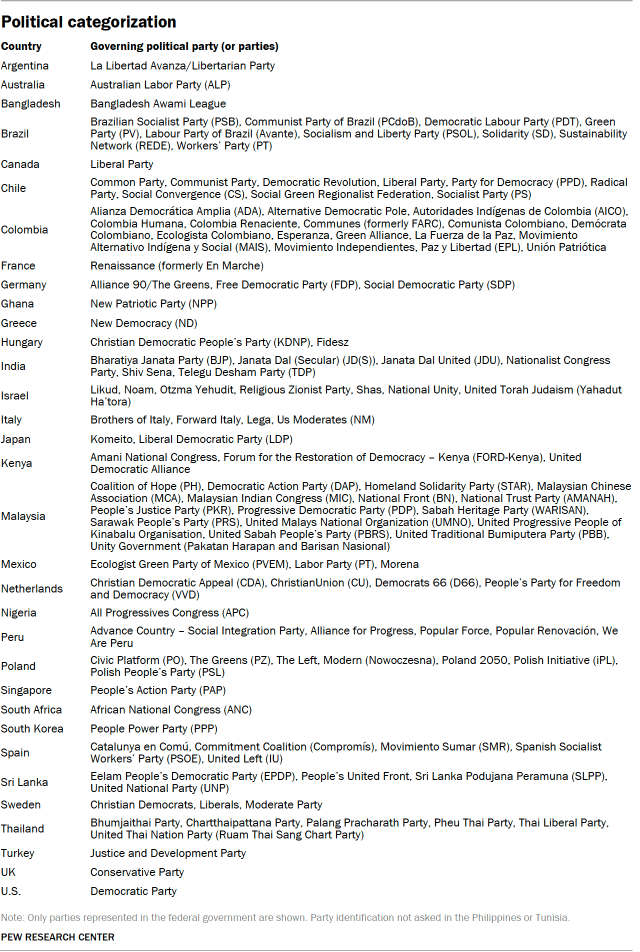For this analysis, we grouped people into two political categories: those who support the governing political party (or parties) in their country, and those who do not. These categories were coded based on the party or parties in power at the time the survey was fielded and on respondents’ answers to a question asking which political party, if any, they identify with in their country.
In countries where multiple political parties govern in coalition (as is the case in many European countries), survey respondents who indicate support for any party in the coalition were grouped together. In Germany, for example, where the Social Democratic Party governed with Alliance 90/The Greens and the Free Democratic Party at the time of the 2024 survey, supporters of any of the three parties were grouped together. In countries where different political parties control the executive and legislative branches of government, the party holding the executive branch was considered the governing party.
Survey respondents who did not indicate support for any political party, or who refused to identify with one, were categorized as not supporting the government in power. Party identification was not asked about in the Philippines or Tunisia.
The table below outlines the governing political parties in each survey country.

